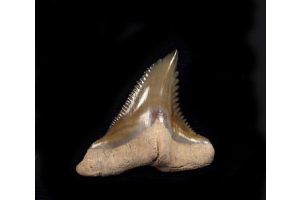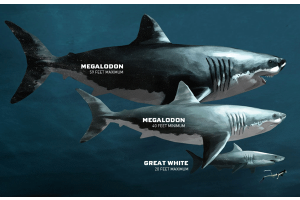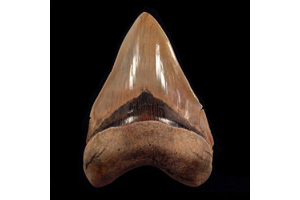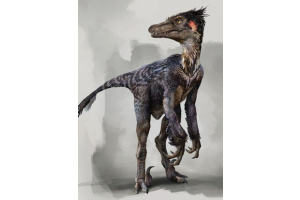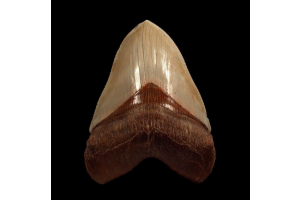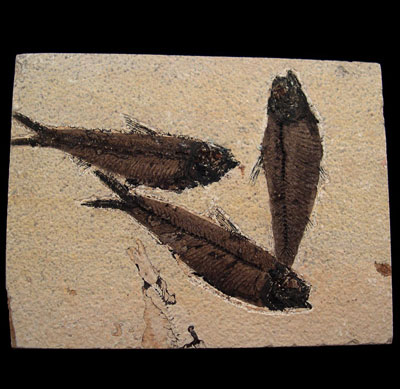
The Green River Formation rocks tell a story of what the environment was like millions of years ago in Fossil Lake, Lake Uinta, and Lake Gosiute, which are now parts of Colorado, Utah, and Wyoming. During those times, Earth forces were almost done with uplifting Rocky Mountains, and the landscape had rugged mountains divided by vast intermountain basins.
The Green River Formations of Utah, Colorado, and Wyoming are some of the best locations where you can find fish fossils. Fossils of the Eocene period were preserved in intermountain lake basins when the Rocky Mountains were still growing!
Let us talk about the different fish fossils of the Green River Fossil Formation.
Knightia eocaena
Knightia eocaena is an extinct group of ray-finned, bony fish. It is one of the most common vertebrate fossils in the world that shares a family with sardines and herrings. They lived in the lakes of North America, ate insects and smaller fish. Knightia had small conical teeth and heavy scales. Paleontologists believe that Knightia eocaena was the primary food source for large vertebrates who once hunted the Green River Formation.
Mooneye
Also known as the toothed herring, Mooneye is the North American freshwater fish of the Hiodontidae family. A rare species predatory fish found in the Green River Formation. Mooneyes preferred river and stream environments and sometimes wandered into the fossil lake, similar to their modern relatives.
Diplomystus
It is an extinct family of prehistoric fish that is immensely famous for its fossils in the Green River Formation. They had an upturned mouth, which made this fish a surface feeder. The largest Diplomystus ever found is over 65 inches (65cm) long. They fed on smaller Knightia during their life, which is why some Knightia fossils can be occasionally found lodged in the throats of huge Diplomystus. Since their fossils were not found in a mass-mortality layer, it is suggested that they did not die in a catastrophe. They most likely died from starvation or suffocation of being unable to spit out the Knightia.
Knightia alta
It is a close relative of Knightia eocaena. Alta is a stronger species and less common than Knightia eocaena and comes from the Green River Formation in Wyoming, USA.
Crossopholis
It was a bony fish in the Eoaena period about 52 million years ago and an extinct relative of the modern paddlefish. Fossils of this fish are extremely rare (comprising less than 0.02% of the fossils found in the green river formation), but unlike their modern North American relatives, Crossopholis was a predatory fish that depended on schooling fish like Knightia eocaena.
School of Knightia Eocaena
As mentioned before, Knightia eocaena was a schooling fish and came from the sandwich beds. It is where many different mortality beds of adult fish are found.
Mioplosus labracoides
These are extinct perch-like fish whose mouth was lined with many tiny teeth. Their teeth helped them grasp prey and prevented them from removing large fish to ingest.
Amateur and professional fossil collectors have collected millions of Green River Formation fossils. Some fossils are now in exhibitions and museums, while others are in collections for sale. Get in touch with us today if you are interested in Green River Formation fossils.






